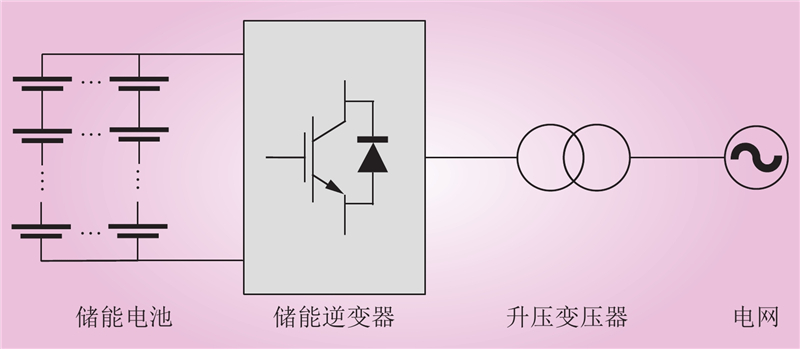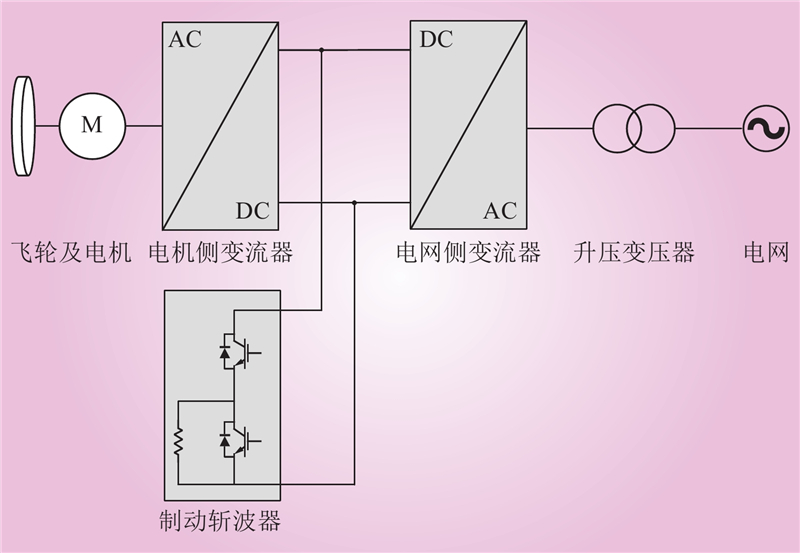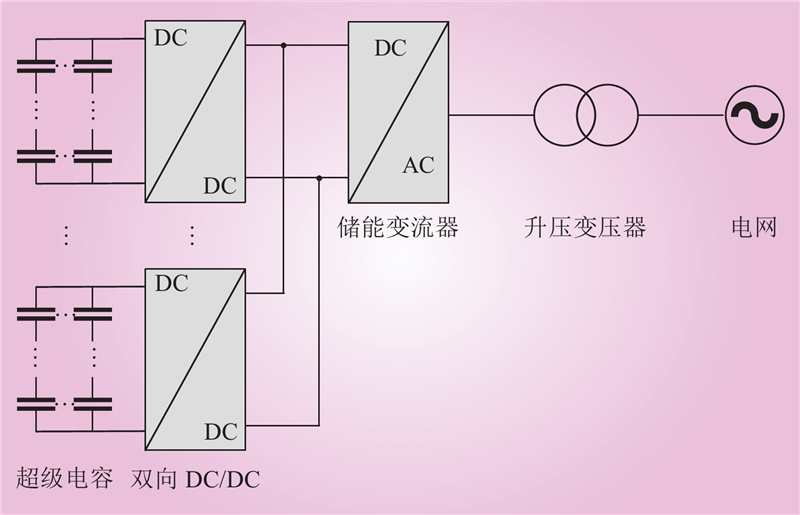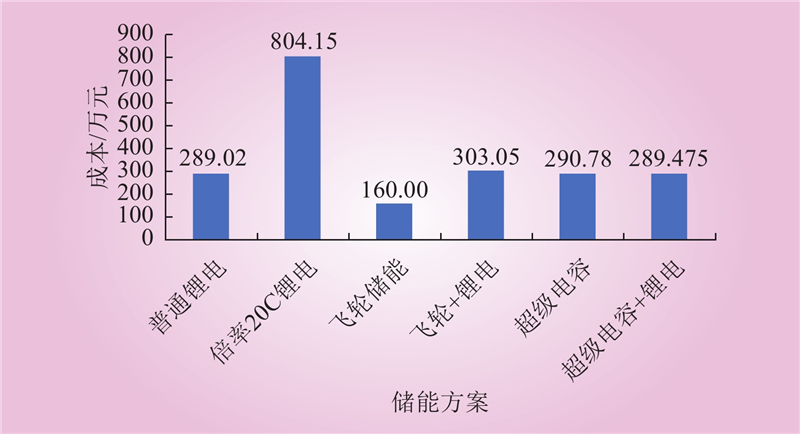| 1 |
闵勇, 陈磊, 刘瑞阔, 等. 电力系统频率动态中惯量与惯量响应特性辨析[J]. 中国电机工程学报, 2023, 43 (3): 853- 867.
|
|
MIN Yong, CHEN Lei, LIU Ruikuo, et al. Analysis on characteristics of inertia and inertial response in power system frequency dynamics[J]. Proceedings of the CSEE, 2023, 43 (3): 853- 867.
|
| 2 |
RAHMANN C, CASTILLO A. Fast frequency response capability of photovoltaic power plants: the necessity of new grid requirements and definitions[J]. Energies, 2014, 7 (10): 6306- 6322.
DOI
|
| 3 |
张子扬, 张宁, 杜尔顺, 等. 双高电力系统频率安全问题评述及其应对措施[J]. 中国电机工程学报, 2022, 42 (1): 1- 25.
|
|
ZHANG Ziyang, ZHANG Ning, DU Ershun, et al. Review and countermeasures on frequency security issues of power systems with high shares of renewables and power electronics[J]. Proceedings of the CSEE, 2022, 42 (1): 1- 25.
|
| 4 |
文云峰, 杨伟峰, 林晓煌. 低惯量电力系统频率稳定分析与控制研究综述及展望[J]. 电力自动化设备, 2020, 40 (9): 211- 222.
|
|
WEN Yunfeng, YANG Weifeng, LIN Xiaohuang. Review and prospect of frequency stability analysis and control of low-inertia power systems[J]. Electric Power Automation Equipment, 2020, 40 (9): 211- 222.
|
| 5 |
程时杰, 文劲宇, 孙海顺. 储能技术及其在现代电力系统中的应用[J]. 电气应用, 2005, 24 (4): 1- 2, 4–6, 8–19.
|
| 6 |
游文霞, 刘斌, 李世春, 等. 风电并网下的抽水蓄能鲁棒最优调频控制策略[J]. 中国电力, 2023, 56 (5): 32- 40.
|
|
YOU Wenxia, LIU Bin, LI Shichun, et al. Robust optimal frequency regulation control strategy for pumped storage in grid-connected wind power systems[J]. Electric Power, 2023, 56 (5): 32- 40.
|
| 7 |
OUDALOV A, CHARTOUNI D, OHLER C. Optimizing a battery energy storage system for primary frequency control[J]. IEEE Transactions on Power Systems, 2007, 22 (3): 1259- 1266.
DOI
|
| 8 |
MERCIER P, CHERKAOUI R, OUDALOV A. Optimizing a battery energy storage system for frequency control application in an isolated power system[J]. IEEE Transactions on Power Systems, 2009, 24 (3): 1469- 1477.
DOI
|
| 9 |
张嘉诚, 夏向阳, 邓子豪, 等. 储能电站安全参与电网一次调频的优化控制策略[J]. 中国电力, 2022, 55 (2): 19- 27.
|
|
ZHANG Jiacheng, XIA Xiangyang, DENG Zihao, et al. Optimal control strategy for energy storage power station in primary frequency regulation of power grid[J]. Electric Power, 2022, 55 (2): 19- 27.
|
| 10 |
贾天下, 陈磊, 闵勇, 等. 快速响应储能参与一次调频的控制策略[J]. 清华大学学报(自然科学版), 2021, 61 (5): 429- 436.
|
|
JIA Tianxia, CHEN Lei, MIN Yong, et al. Control strategy for primary frequency regulation with the participation of a quick response energy storage[J]. Journal of Tsinghua University (Science and Technology), 2021, 61 (5): 429- 436.
|
| 11 |
刘辉, 葛俊, 巩宇等. 风电场参与电网一次调频最优方案选择与风储协调控制策略研究[J]. 全球能源互联网, 2019, 2 (1): 44- 52.
|
|
Liu Hui, Ge Jun, Gong Yu, et al. Optimization scheme selection of wind farm participation in grid primary frequency modulation and study of wind-storage coordination control strategy[J]. Journal of Global Energy Interconnection, 2019, 2 (1): 44- 52.
|
| 12 |
谷晴, 李睿, 蔡旭, 等. 面向百兆瓦级应用的电池储能系统拓扑与控制方法[J]. 发电技术, 2022, 43 (5): 698- 706.
|
|
GU Qing, LI Rui, CAI Xu, et al. Topology and control method of battery energy storage system for application at the scale of hundreds of megawatts[J]. Power Generation Technology, 2022, 43 (5): 698- 706.
|
| 13 |
LIU H, HU Z C, SONG Y H, et al. Decentralized vehicle-to-grid control for primary frequency regulation considering charging demands[J]. IEEE Transactions on Power Systems, 2013, 28 (3): 3480- 3489.
DOI
|
| 14 |
蒋平, 袁铁江, 车勇, 等. 分散式风储一体化系统容量规划研究[J]. 电力电容器与无功补偿, 2018, 39 (1): 138- 146.
|
|
JIANG Ping, YUAN Tiejiang, CHE Yong, et al. Study on capacity planning of distributed wind-storage integration system[J]. Power Capacitor & Reactive Power Compensation, 2018, 39 (1): 138- 146.
|
| 15 |
徐波, 俞向栋, 杨逸欣, 等. 基于多智能体系统的分布式风储协同频率控制策略[J]. 电力系统保护与控制, 2022, 50 (19): 13- 24.
|
|
XU Bo, YU Xiangdong, YANG Yixin, et al. Distributed wind-storage coordinate frequency control strategy based on a multi-agent system[J]. Power System Protection and Control, 2022, 50 (19): 13- 24.
|
| 16 |
微控新能源大唐阜新查台风电场站飞轮一次调频及惯量响应应用项目[EB/OL]. (2021-11-16)[2023-08-21]. http://www.cnenergynews.cn/zhuanti/2021/11/16/detail_20211116111008.html.
|
| 17 |
电网友好型技术[EB/OL]. (2022-11-21)[2023-08-21]. https://www.chinawindey.com/technology?id=1.
|
| 18 |
张峰, 孟高军, 孙玉坤, 等. 高渗透率风电并网下的电力系统调频技术综述[J]. 电气应用, 2019, 38 (9): 19- 26.
|
|
ZHANG Feng, MENG Gaojun, SUN Yukun, et al. Review on power system frequency modulation technology under high permeability wind power grid connection[J]. Electrotechnical Application, 2019, 38 (9): 19- 26.
|
| 19 |
唐西胜, 武鑫, 齐智平. 超级电容器蓄电池混合储能独立光伏系统研究[J]. 太阳能学报, 2007, 28 (2): 178- 183.
|
|
TANG Xisheng, WU Xin, QI Zhiping. Study on a stand-alone pv system with battery/ultracapacitor hybrid energy storage[J]. Acta Energiae Solaris Sinica, 2007, 28 (2): 178- 183.
|
| 20 |
李想, 张建成, 王宁. 超级电容器-飞轮-蓄电池混合储能系统容量配置方法研究[J]. 中国电力, 2018, 51 (11): 117- 124.
|
|
LI Xiang, ZHANG Jiancheng, WANG Ning. Capacity configuration strategy for super capacitor-flywheel-battery hybrid energy storage system[J]. Electric Power, 2018, 51 (11): 117- 124.
|
| 21 |
谢石骁, 杨莉, 李丽娜. 基于机会约束规划的混合储能优化配置方法[J]. 电网技术, 2012, 36 (5): 79- 84.
|
|
XIE Shixiao, YANG Li, LI Lina. A chance constrained programming based optimal configuration method of hybrid energy storage system[J]. Power System Technology, 2012, 36 (5): 79- 84.
|
| 22 |
国家市场监督管理总局, 国家标准化管理委员会. 并网电源一次调频技术规定及试验导则: GB/T 40595—2021[S]. 北京: 中国标准出版社, 2021.
|
| 23 |
U S. Department of Energy Office of Electricity Delivery & Energy Reliability. Energy storage program planning document 2011 [EB/OL]. (2013-12-23) [2023-08-21]. http://energy.gov/oe/downloads/energy-storage -program-planning-document.
|
| 24 |
Council W E. World Energy Resources Report 2016, E-storage - shifting from cost to value 2016 – wind and solar applications[R]. London: World Energy Council, 2016: 11.
|
| 25 |
中国能源研究会储能专委会, 中关村储能产业技术联盟. 储能产业发展蓝皮书[M]. 北京: 中国石化出版社, 2019: 130–131.
|
| 26 |
李建林, 黄际元, 房凯, 等. 电池储能系统调频技术[M]. 北京: 机械工业出版社, 2018: 22.
|
| 27 |
张丽荣. 内蒙古杭锦旗巴拉贡镇乌吉尔风电场近30年气候分析[J]. 内蒙古科技与经济, 2022, (10): 77- 78, 129.
|
| 28 |
张金强, 熊国专, 胡鹏, 等. 风电机组变桨用超级电容更换周期计算方法分析[J]. 风能, 2022, (10): 74- 79.
|
| 29 |
刘鑫, 李欣然, 谭庄熙, 等. 基于不同种类储能电池参与一次调频的最优策略经济性对比[J]. 高电压技术, 2022, 48 (4): 1403- 1410.
|
|
LIU Xin, LI Xinran, TAN Zhuangxi, et al. Economic comparison of optimal strategies based on different types of energy storage batteries participating in primary frequency regulation[J]. High Voltage Engineering, 2022, 48 (4): 1403- 1410.
|
| 30 |
刘倩倩. 锂离子电池负极析锂机制及抑制方法研究[D]. 哈尔滨: 哈尔滨工业大学, 2018: 6-18.
|
|
Liu Qianqian. study on the mechanisms of li platng and suppression of li plating in lithiumion cells[D]. Harbin: Harbin Institute of Technology, 2018: 6-18.
|
| 31 |
德)安德列亚斯·福尔克(Andreas Volke), (德)麦克尔·郝康普(Michael Hornkamp)著[★]韩金刚译. IGBT模块: 技术、驱动和应用[M]. 北京: 机械工业出版社, 2016.
|







